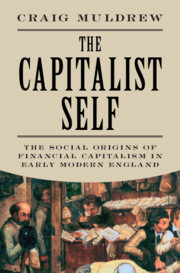Refine search
Actions for selected content:
26945 results in Economic history
Tables
-
- Book:
- The City's Defense
- Published online:
- 09 October 2025
- Print publication:
- 23 October 2025, pp xv-xvi
-
- Chapter
- Export citation
Bibliography
-
- Book:
- The City's Defense
- Published online:
- 09 October 2025
- Print publication:
- 23 October 2025, pp 361-422
-
- Chapter
- Export citation
Abbreviations
-
- Book:
- The City's Defense
- Published online:
- 09 October 2025
- Print publication:
- 23 October 2025, pp xxiii-xxiv
-
- Chapter
- Export citation
Contents
-
- Book:
- The City's Defense
- Published online:
- 09 October 2025
- Print publication:
- 23 October 2025, pp xi-xii
-
- Chapter
- Export citation
Copyright page
-
- Book:
- The City's Defense
- Published online:
- 09 October 2025
- Print publication:
- 23 October 2025, pp viii-viii
-
- Chapter
- Export citation
Dedication
-
- Book:
- The City's Defense
- Published online:
- 09 October 2025
- Print publication:
- 23 October 2025, pp ix-ix
-
- Chapter
- Export citation
Appendix
-
- Book:
- The City's Defense
- Published online:
- 09 October 2025
- Print publication:
- 23 October 2025, pp 351-360
-
- Chapter
- Export citation
9 - Authority Maintained
-
- Book:
- The City's Defense
- Published online:
- 09 October 2025
- Print publication:
- 23 October 2025, pp 326-343
-
- Chapter
- Export citation
Tuberculosis mortality and industrialisation in Italy, 1891-1951
-
- Journal:
- Revista de Historia Economica - Journal of Iberian and Latin American Economic History , First View
- Published online by Cambridge University Press:
- 22 October 2025, pp. 1-28
-
- Article
- Export citation
Inflation and energy price shocks: lessons from the 1970s
-
- Journal:
- Financial History Review , First View
- Published online by Cambridge University Press:
- 20 October 2025, pp. 1-30
-
- Article
-
- You have access
- Open access
- HTML
- Export citation

Before the Fed
- J.P. Morgan, America's Lender of Last Resort
-
- Published online:
- 16 October 2025
- Print publication:
- 30 October 2025

The Capitalist Self
- The Social Origins of Financial Capitalism in Early Modern England
-
- Published online:
- 12 October 2025
- Print publication:
- 30 October 2025
Employee stock ownership during the Great Depression: the varying impacts of ESOPs on output growth and worker utilization
-
- Journal:
- Financial History Review , First View
- Published online by Cambridge University Press:
- 10 October 2025, pp. 1-52
-
- Article
-
- You have access
- Open access
- HTML
- Export citation

The City's Defense
- The Bank of England and the Remaking of Economic Governance, 1914–1939
-
- Published online:
- 09 October 2025
- Print publication:
- 23 October 2025
Appendices
-
- Book:
- The Experience of Work in Early Modern England
- Published online:
- 19 September 2025
- Print publication:
- 09 October 2025, pp 327-334
-
- Chapter
-
- You have access
- Open access
- HTML
- Export citation
Preface
-
- Book:
- The Experience of Work in Early Modern England
- Published online:
- 19 September 2025
- Print publication:
- 09 October 2025, pp xiii-xiv
-
- Chapter
-
- You have access
- Open access
- HTML
- Export citation
Contents
-
- Book:
- The Experience of Work in Early Modern England
- Published online:
- 19 September 2025
- Print publication:
- 09 October 2025, pp v-vi
-
- Chapter
-
- You have access
- Open access
- HTML
- Export citation
Conclusion
-
- Book:
- The Experience of Work in Early Modern England
- Published online:
- 19 September 2025
- Print publication:
- 09 October 2025, pp 315-326
-
- Chapter
-
- You have access
- Open access
- HTML
- Export citation
Index
-
- Book:
- The Experience of Work in Early Modern England
- Published online:
- 19 September 2025
- Print publication:
- 09 October 2025, pp 351-362
-
- Chapter
-
- You have access
- Open access
- HTML
- Export citation
Appendix A - Relationship between Categories and Court Type
- from Appendices
-
- Book:
- The Experience of Work in Early Modern England
- Published online:
- 19 September 2025
- Print publication:
- 09 October 2025, pp 327-327
-
- Chapter
-
- You have access
- Open access
- HTML
- Export citation
